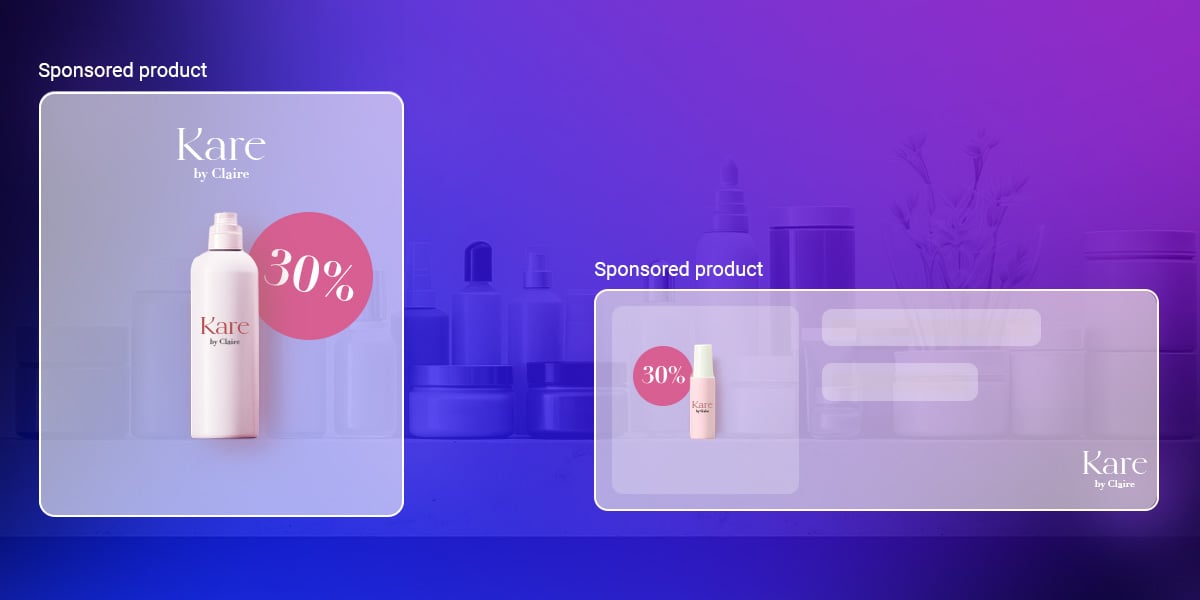Does the digital landscape ever stop evolving? What about the average marketer’s approach to display advertising? In 2025, both of these areas are set for significant shifts, driven of course by advances in technology and ever-changing consumer behaviors. The rise of artificial intelligence (AI), augmented reality (AR), and virtual reality (VR) are undoubtedly changing the way we interact with consumers, not to mention the ever-evolving world of privacy and data protection.
So what are the latest updates for display advertising going into 2025?
Let’s dive into some of the top display advertising trends that marketers should leverage for creative, impactful, and privacy-compliant campaigns.
Embracing AI and automation for smarter campaigns
We’re at a point in digital marketing history where AI and automation in advertising have become commonplace. What’s more, AI-driven advertising has evolved beyond basic automation.
In 2025, brands (that aren’t already doing so) will be harnessing AI to analyze large data sets, predict consumer behavior, and create dynamic ad variations in real time. For instance, predictive analytics now allow campaigns to anticipate what content will resonate with specific audiences based on their past interactions.
Best Practice for 2025: Incorporate machine learning models to segment audiences and deliver tailored ads. Test different creative versions using AI insights to see which combinations drive engagement.

The rise of interactive and immersive ad experiences
AR & VR are transforming how brands connect with consumers. With AR, users can try on products virtually or visualize how furniture would look in their space, creating a richer and more interactive experience.
The global AR and VR market is expected to grow annually at a rate of 8.97%, leading to a projected market volume of $62 billion by 2029. This isn’t just a passing trend; this is an industry with a steadily growing influence.
Immersive ads are especially effective in industries like retail and real estate, where interaction can make a significant impact on purchase intent. In 2025, interactive display ads are becoming standard as brands look to engage customers beyond traditional visuals.
Best Practice for 2025: Create interactive ads to engage your audience. Combine interactive elements with dynamic content to create a customized experience for users - for example, a fashion brand can use AR to let users try on clothing virtually, enhancing engagement and brand loyalty.

Prioritizing data-driven personalization
As privacy regulations tighten, brands are transitioning from third-party to first-party data for ad personalization. Unlike third-party data, first-party data (data collected directly from the consumer) allows for a richer understanding of user intent and preferences, potentially leading to more effective ad campaigns.
This shift calls for brands to collect data directly from consumers through website interactions, subscriptions, or purchase history while maintaining transparency and compliance. Contextual targeting, which places ads based on the surrounding content rather than user tracking, will likely be central in 2025 as a result.
Best Practice for 2025: Focus on gathering meaningful first-party data through direct interactions, surveys, email marketing and more. Tools that enable contextual targeting allow marketers to align ads with relevant content, increasing engagement and conversion rates without raising privacy concerns.
→ Make every impression count with data-fueled personalization [Explore Creative Personalization]
Adapting to privacy-first advertising regulations
Privacy laws like GDPR and CCPA have already transformed the digital advertising landscape, and new regulations are expected in the coming years. Brands need to adopt transparent, consent-based advertising practices to stay compliant and gain user trust. By focusing on transparency, companies can build stronger relationships with their audiences, which is increasingly important in privacy-first marketing.
According to a Cisco report, 75% of consumers won’t purchase from a company they don’t trust with their data, and 49% have switched companies over data practices. This underscores the need for clear, honest communication about data usage to retain customer loyalty.
Best Practice for 2025: Use tools and platforms to keep your ads compliant without losing that personal touch. Choose clear, transparent opt-ins, and let users know how their data will enhance their experience — building trust along the way.

Video ads in display advertising: short-form takes the lead
Short-form videos continue to dominate, particularly on social media platforms like Instagram and TikTok. In 2025, this type of video-based display advertising will be essential for capturing consumers' attention quickly, aligning with our fast-paced digital environment. Brands should focus on creating videos under 60 seconds, with immediate calls to action, to maximize impact in limited time.
According to Animoto, video ads were the number one way consumers discovered a brand that they later purchased from. It’s clear that short-form video is especially compelling in display advertising, as it delivers a concise, memorable message.
Best Practice for 2025: When crafting short-form video ads, start with a hook that grabs attention within the first three seconds. Use storytelling to connect emotionally with viewers, leading to higher conversion rates.Programmatic advertising continues to dominate
Programmatic advertising is essential for targeted campaigns, and it will likely become even more prevalent across various channels in 2025. By leveraging data-driven algorithms, programmatic ad buying ensures that ads reach the right audience, at the right time, and on the right platform.
In the U.S., programmatic advertising spending is projected to reach $180 billion by 2025, accounting for a significant portion of display ad budgets across the country. Small and mid-sized businesses benefit from programmatic’s precise targeting, optimizing ad spend and driving higher ROI.
Best Practice for 2025: Brands should leverage programmatic for campaigns targeting niche segments, as it provides insights that help refine audience targeting. Experiment with placements across various channels, from mobile to connected TV (CTV), to maximize reach.
The importance of native advertising for a seamless experience
Consumers are drawn to ads that blend naturally into the content they’re viewing, making native advertising a reliable, effective approach in 2025 and beyond. By mimicking the platform’s style, native ads deliver information in a non-intrusive way, making this format ideal for reducing ad fatigue while ensuring messages reach their intended audience.
Research shows that native ads are viewed 53% more frequently than display ads - so why not embrace them? By aligning with the platform’s style, native ads are less disruptive, encouraging users to engage rather than skip past them.
Best Practice for 2025: Use native ads to reach audiences without disrupting their experience. Design ads that look and feel like content, adding value to users while subtly promoting the brand.
Banner ads or native ads? You decide.
Display advertising in 2025 and beyond
As 2025 brings transformative trends in display advertising, marketers have more opportunities than ever to create campaigns that are dynamic, immersive, and privacy-first.
To stay competitive, it’s important to leverage tools that streamline creative processes, optimize targeting, and respect user privacy. Bannerflow equips your brand with the capabilities to bring these strategies to life — from powerful data-driven insights to creative automation that scales effortlessly across channels.
Want more insights to develop your marketing strategy? Sign up for Bannerflow’s monthly newsletter today.








